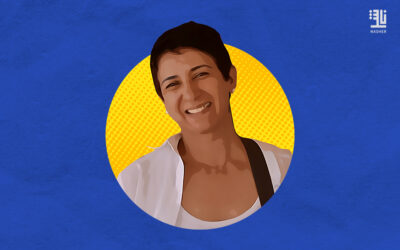In his book about the bride of the Red Sea
The four years that the French Doctor Louis Blin spent in the city of Jeddah, Saudi Arabia, as part of his diplomatic mission, were pretty enough to open his eyes to the “Bride of the Red Sea”, and its special status for the French orientalists. According to Blin, the city for the French is like a gateway to the East. His new book: La découverte de l’Arabie par les Français – Anthologie de textes sur Djeddah, 1697-1939, came as a rich research that turns the pages of history, and traces the stages of France’s discovery of the Arabian Peninsula. It also follows the development of the French view of this particular region.
Dr. Blin, who recently landed in Dubai, presented in his French-language book a complete portrait of Jeddah in the eyes of the French by recounting the numerous details highlighted by some 50 French writers. He is now preparing to translate his book into Arabic in the United Arab Emirates, with the Arabic version is expected to see the light in early 2020.
“Nasher” interviewed Dr. Blin, who explained that his choice of the city of Jeddah, as a topic for the book, was not at random. His thoughtful studies unveiled to him the importance of this city, and how French Orientalists were deeply associated with it. He said: “This city served as a gateway for the French to the true east, or to the roots of French people who had been associated for centuries with the North African region. Yet, the existence of the Tomb of Eve in Jeddah was a direct reason for us to return to it and find our true roots. This is why being introduced to Jeddah and its people and the nature of their culture was of great importance to the French, who flocked to it with the opening of the French Consulate in 1839. ”
Poetry and novels
Blin added that his research journey led to the discovery of many documents that prove the mention of the city of Jeddah in French literature. “Jeddah was the inspiration for many French writers, whether in poetry, fiction or other literatures. In the course of my research, I counted about 57 texts edited between 1810 and 1937. I think that Jeddah during this era had attracted great interest among the French writers, where 50 French writers were able to creatively portray the rich details of the city. This collection of writings allows us to trace the stages of France’s discovery of not only Jeddah, but to the Arabian Peninsula in general. It also gives a closer look at the evolution of the French view of the region during the 19th and 20th centuries.” Blin pointed out that during this period the French orientalists recorded their observations on the architectural heritage of the city, and the nature of the cultural intermingling enjoyed by Jeddah at the time.
Legend of the centuries
In his book, Dr. Blin refers to the “The Legend of the Centuries” collection of poems by Victor Hugo. “Jeddah was the theater Hugo’s poem “The Cedar Tree”, where he called Jeddah the holy city. He added: “It was not only Hugo; there were many French writers who wrote about Jeddah. This shows how attractive the city was for them. This is also evident in Alexander Dumas’s book “A Travel Memoirs of the Arabian Peninsula”, in which he presented a description of the city of Jeddah, as seen by his co-author of the book, Louis de Courie, who visited the city between 1842 and 1843.
In his book, Dr. Blin spoke about the experience of Charles Didier, who arrived at Jeddah in 1854, an wrote a book entitled “Residing in the guesthouse of the Great Sharif, Sharif of Makkah,” in which he gave a special and attractive description. “As a French Orientalist, Didier provided one of the most accurate descriptions of the city. He praised its beauty, and the unique architecture of its buildings, and expressed astonishment at the diversity of the population that has always characterized Jeddah.”







